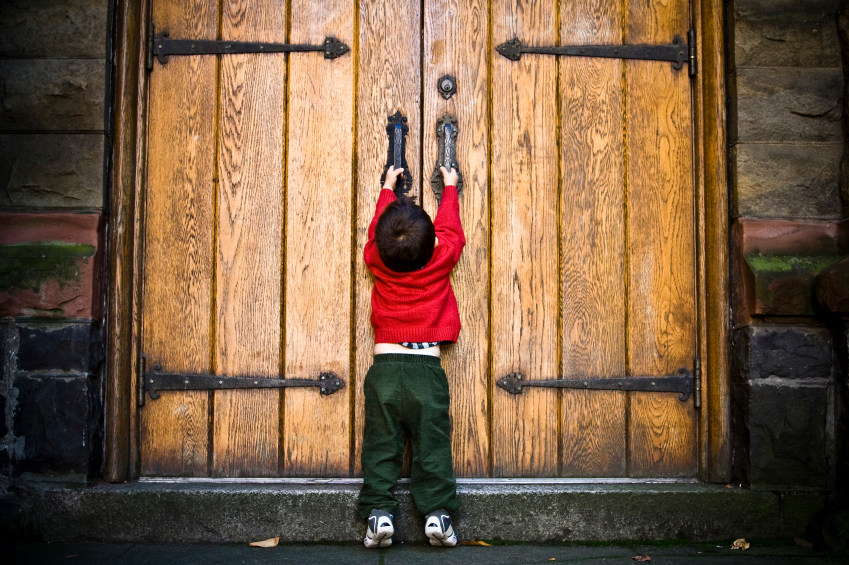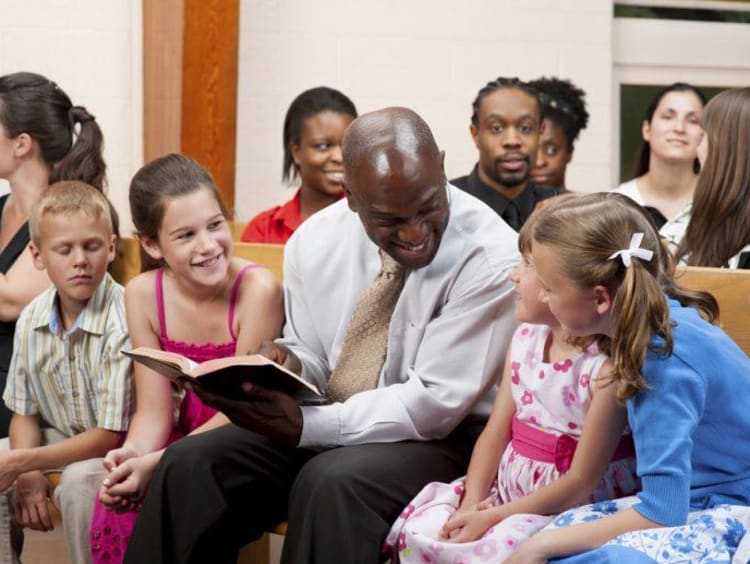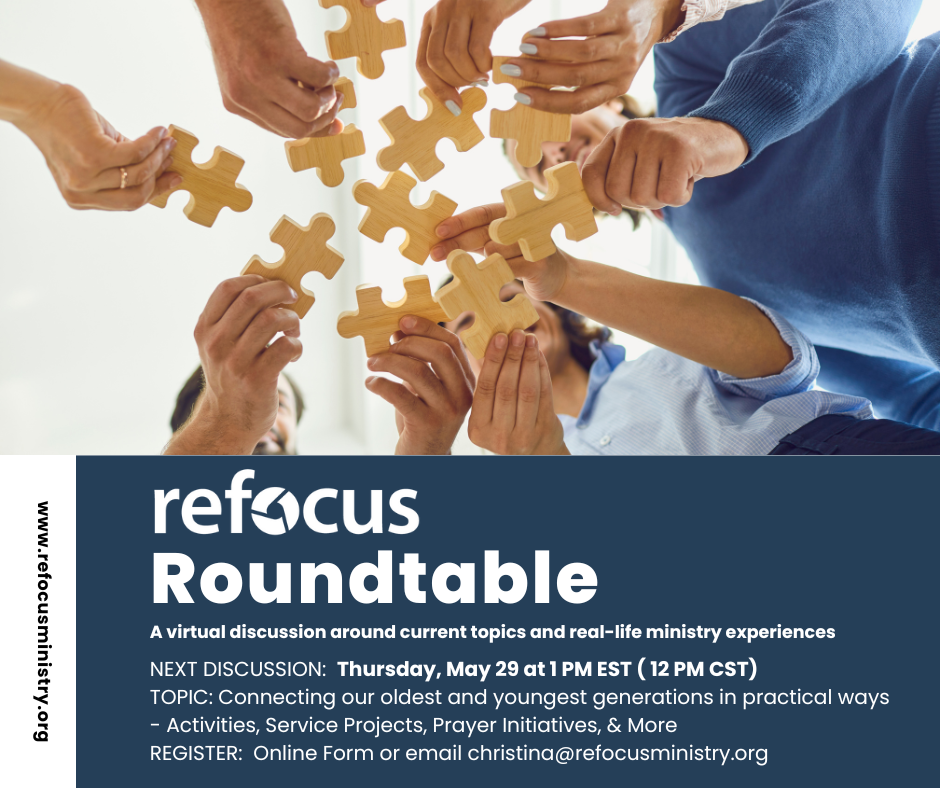There’s something holy about hospitality. It’s more than nice tablecloths and special food for company. It’s a space of embrace and integration, of true community and belonging.

When thinking about hospitality between generations, we might imagine multiple generations being welcomed into places that are traditionally focused on one age group or stage of life. And usually, whenever we talk about including all ages in these spaces, one of the concerns that gets raised is whether or not developmental needs of all ages are being met in that context. Especially if we are talking about the inclusion of children in the larger worship context.
But often these concerns are based on a narrowly defined area of developmental research and theories. A broader view of developmental psychology can give us a better understanding of what it means for something to be “developmentally appropriate.”
Like most research, developmental theories are just that – theories. Lots of research continues to be done in early childhood development. Most people only think about cognitive development as the ability to understand certain things like words in a sermon or abstract concepts like worship. However, if we are looking at basics of development, it’s helpful to think bigger than that.
Development not just about what children or adults can understand in terms of words and concepts; it’s about what they can learn socially, emotionally and in our case, spiritually.
Here are a few research-based reasons that support the inclusion of all ages, including younger children all the way through older adults, in times of corporate worship and intergenerational learning.
Vygotsky’s Zone of Proximal Development
This developmental theory explains that young children need to be in close proximity to older people who have “mastered” the tasks that they are learning. For instance, a four-year old is going to learn how to stack blocks better when playing with a 6 year old who has mastered the trick.
- When we are talking about church, these young children learn what church is, how to act, what is expected by being in close proximity to adults who are practicing especially their parents who hold the most influence on their children’s spiritual lives. Here’s a great article about the power of the Zone of Proximal Development.
- Conversely, Jesus himself tells us that adults can learn the most about the kingdom of God by observing and imitating a child (Matthew 18:1-4). We genuinely need each other in order to grow physically and spiritually.

This is another powerful developmental tool for young children. Watching others model what they should do is an important part of social development and one that has been lacking to in the larger church. This is often why when youth “graduate” from youth group, they don’t know how to interact socially with the larger church body and often end up leaving the church and saying they don’t feel like they belong.
Creating opportunities for observational learning can be tricky if a church is structured in a way characterized by all ages being separated from one another. The key is to create spaces where generational interaction can take place. For some practical tips and ideas for creating spaces where generations can connect together in worship and discipleship, check out this article.
Fowler’s theory of Faith Development
Probably the best known developmental work in the area of faith comes from James Fowler and is based heavily on the work of Piaget, Erikson and Kohlberg (Check out the book The Church of All Ages by Howard Vanderwell, Chapter 3 for much more on this).
- In Fowler’s first stage (preschool aged children up to age 6) called the Intuitive-Projective faith stage, children basically reflect the spirituality of their parents. Children will build their first ideas about their faith from the impressions of what they see and hear in church.
- The second stage (age 6-11) is called the Mythic-Literal stage where kids begin to learn the stories of the faith and articulate their own beliefs. That belief is largely mitigated by information they get from others and parents begin to share their influence with the rest of the church family. Framing sermons with a biblical story is a perfect way to invite this age into the sermon.
Other noted developmental ideas come from the work of Jean Piaget whose first two stages of development put a high premium on the importance of language combined with sensorimotor exploration. This is why sensory bags or activity bags during services can be such a powerful tool for helping children engage during worship time.
Note: Activity bags get a bad rap, mostly because people don’t understand the developmental science behind them. It’s important to understand that these activities aren’t intended to distract the kids but rather to help the kids use all of their developing senses; studies show if their hands and eyes are busy, their ears will be listening. Quiet activities like lacing cards, stickers scenes, foam craft kits, beads and pipe cleaners, small puzzles and coloring are all great ways to engage your kinesthetic and visual learners.
The truth is if we look at the broad spectrum of developmental theories including these and others not mentioned here like Erikson’s stages of psychosocial development or Kohlberg’s stages of moral development, we can find space in all of them for including all ages in contexts of intergenerational worship and ministry. Because ultimately, as social creatures, humans learn best from one another regardless of age. That means developmental appropriateness is something we can incorporate into any setting where we connect with other, especially others at different stages of development than we are.
Does that mean we shouldn’t have age-sensitive spaces?
No, not at all. There are lots of other developmental reasons to have spaces that meet our unique developmental needs. For instance, the ability to think abstractly is a characteristic of higher levels of development; until then, concrete thought is our primary means of processing. So, we should have places where concrete learning is available.
The community worship service where all generations interact and connect can be developmentally appropriate if we are willing to broaden our understanding and find ways to build on the developmental stages we all find ourselves in. We have to become hospitable
That would also mean we would craft environments that aren’t targeted to a few generations but take the time to ensure each member in attendance would be able to participate in developmentally appropriate ways. We would need to welcome the stranger and find ways to embrace the community. And in that way, we can even more fully explore what it means to experience hospitality between generations.
ReFocus Roundtable: Connecting Generations at Your Church

Join ReFocus Ministry on May 29 at 1 pm EDT (12 pm CT, 11 am MT, 10 am PT) for a free webinar that will give you the basic building blocks of intergenerational ministry as well as offer practical next steps and resources to identifying and connecting the generations present in your church today. Email us at christina@refocusministry.org to save your seat at the table.
About the Author

Christina Embree is the founder and director of ReFocus Ministry. She holds a masters in ministry focused on Children, Youth, and Family Ministry and a doctorate in spiritual formation with a focus on age segregation and intergenerational ministry. In addition to coaching churches of multiple denominations and traditions all around the globe, Christina serves as the Minister of Generational Discipleship for the Great Lakes Conference of the Brethren in Christ and as a pastor at Plowshares Brethren in Christ in Lexington, Kentucky. She is widely recognized as a speaker and author in the areas of generational discipleship, intergenerational ministry, and family ministry. As the mother of three children, she is familiar with the challenges of faith at home and pastoral ministry. She along with her husband Luke share a love for the church, their community, and the global work of peace and restoration through Jesus.

